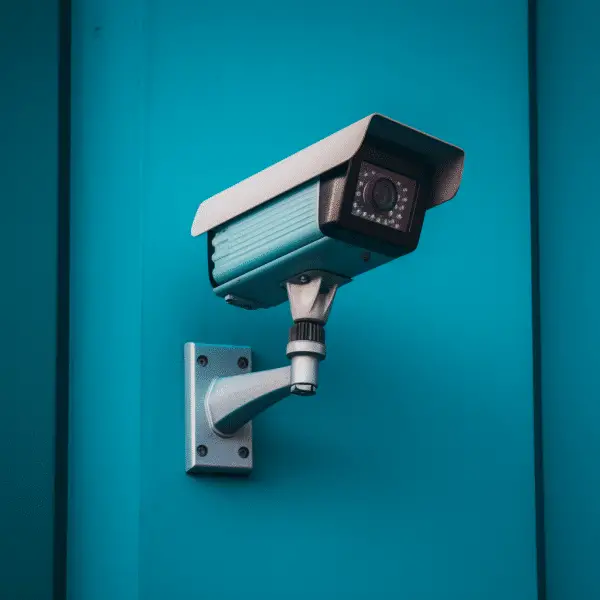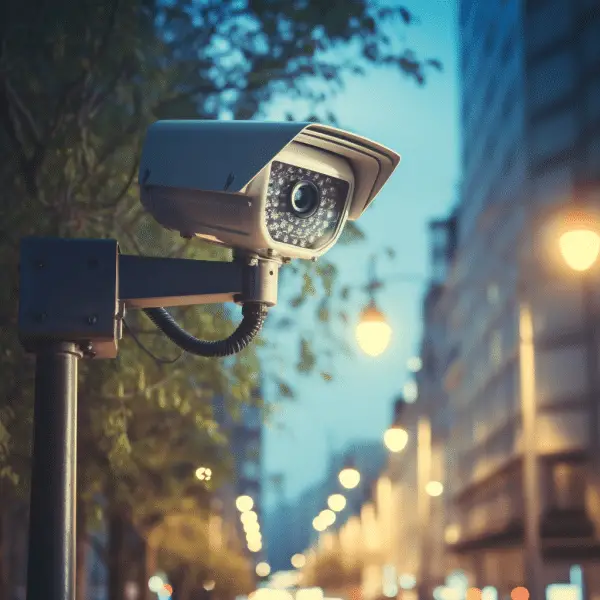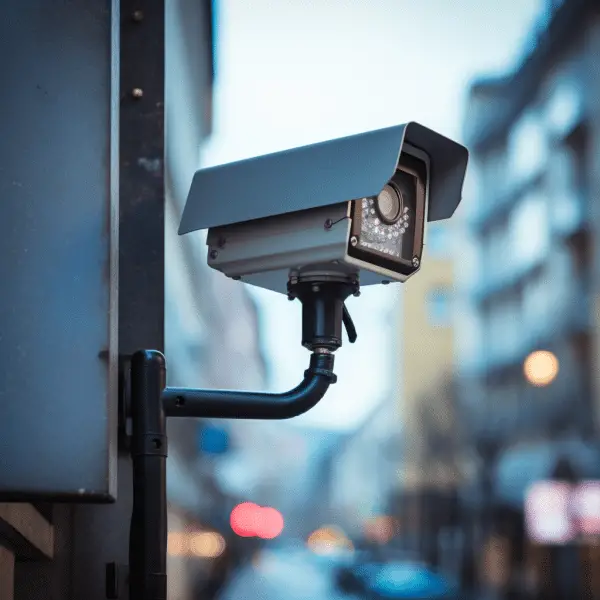Introduction
Installers of Ring Cameras: In an increasingly interconnected world, technology shapes security and surveillance perceptions. Ring cameras, among other advances, are popular with households and businesses looking to improve safety. These smart doorbell cameras with motion sensors and video recording have received attention for their ability to combat crime and provide vital insights into daily routines. Understanding the demographics behind Ring camera installations helps explain its popularity and its possible privacy and security impacts.
This study examines Ring camera users’ different demographics, including age, income, urbanization, and regional differences. This study also examines how Ring’s substantial marketing and outreach affects installation rates by demography. Ring camera installations’ ethical implications will also be crucial to this examination.
Data privacy and surveillance footage misuse have sparked disputes about civil liberties and social dynamics. Ring camera users’ demographics are the key to understanding the social, economic, and ethical implications of this technology, which can help policymakers, businesses, and individuals balance safety and privacy in our technologically changing world.

Can anyone install a Ring camera?
Don’t worry—installing a Ring doorbell is easier than you think. We’ve put together some easy-to-follow steps based on our own Ring installation experiences, and we’ve also thrown in a few bonus pro tips and tricks from an experienced technician to help make your Ring doorbell cam installation a breeze.
Ring cameras are designed to be user-friendly and accessible to a wide range of individuals, making it possible for most people to install them. The process typically involves a few straightforward steps that do not require advanced technical skills or expertise. Here are some key points regarding Ring camera installations:
Ring cameras are touted as DIY security devices. They have thorough instructions and many types are easy to set up without professional help. Follow the instructions and install using the Ring app.
Basic Tools: Installing a Ring camera usually requires only basic household tools, such as a screwdriver or drill. The camera often comes with the necessary mounting hardware, further simplifying the process.
Tech-Savvy Not Required: Ring cameras are intended for use by people of varying technical backgrounds. The user-friendly app interface guides individuals through the setup, making it accessible to those who may not be tech-savvy.
Wi-Fi Connection: The cameras rely on a stable Wi-Fi connection to function effectively. Ensuring a reliable internet connection is essential for proper device performance.
Ring cameras can be powered by batteries or doorbell cable, depending on the model. Camera placement is more flexible with batteries.
Ring cameras can be put without altering the property, making them acceptable for renters. This lets users move with their cameras.
Who do you call to install a Ring doorbell?
Amazon Home Services (AHS) employs vetted, trained, Ring-savvy, and insured service providers. You can make convenient appointments that fit in with your schedule and have a professional installer at your door ready to install your Ring product.
To install a Ring doorbell, there are a few options available depending on your preferences and technical abilities. Here are the main choices for getting your Ring doorbell installed:
Ring doorbells are easy to install, and many types are DIY. The package usually comes with all the necessary tools and step-by-step instructions to guide you through the process. If you are comfortable with basic household tools and following instructions, self-installation can be a cost-effective and convenient option.
In some regions, Ring offers professional installation for individuals who prefer an expert. Ring’s website or customer support will help you find out if this service is available in your area and book a technician. Professional installation of the Ring doorbell is guaranteed.
Third-Party Installation Services: In some cases, you may find local companies or contractors that specialize in smart home device installations. These third-party services may offer installation assistance for Ring doorbells, along with other smart home devices. If you choose this option, make sure to select a reputable and experienced provider to ensure a smooth installation process.
Can you pay someone to install a Ring doorbell?
Ring Doorbell Installation Costs
A pro can connect your new doorbell to the existing wiring, sort out any new wiring and perform tests to ensure your Ring doorbell is up and running properly. You’ll pay an electrician anywhere between $230 and $355 (CAD 310 and CAD 475) to install your Ring, according to Porch.
Yes, you can pay someone to install a Ring doorbell. Ring doorbells, like many smart home devices, can be installed by professionals who offer installation services. If you prefer not to handle the installation yourself or if you’re not comfortable with DIY projects, hiring a professional can be a convenient and hassle-free option.
There are several ways to find someone to install your Ring doorbell for you:
Ring Professional Installation: Ring offers its own professional installation services in certain areas. You can check on their website or contact their customer support to see if this service is available in your location. If it is, you can schedule an appointment with a Ring-certified technician who will come to your home and handle the installation for you.
Local Contractors or Installers: Some local companies or independent contractors specialize in smart home device installations. These professionals may offer installation services for Ring doorbells along with other smart home devices. You can search for local installers through online directories or by asking for recommendations from friends or family.
Retail Store Services: If you purchase your Ring doorbell from a retail store, such as a home improvement or electronics store, they may offer installation services as an additional option. Inquire at the store if they have any installation packages available.
Can I install Ring camera myself?
Do it all by yourself. We have all the help you need to get your Ring device installed in minutes. Check out our Setup Guides and Help Center for step-by-step instructions, or contact our dedicated Support Team to walk you through the entire process.
Yes, you can install a Ring camera yourself. Ring cameras are user-friendly and easy to install yourself. Here are the key reasons why you can confidently install a Ring camera on your own:
Simple Design: Ring cameras are easy to use for non-technical people.The installation process is often accompanied by clear step-by-step instructions and intuitive setup procedures.
DIY Installation Instructions: Each Ring camera package includes a detailed installation guide that outlines the necessary steps to set up the device. The guide typically comes with illustrations and explanations to make the process easy to follow.
Minimal Tools Required: Installing a Ring camera typically requires only basic household tools, such as a screwdriver or drill. The camera package usually includes any necessary mounting hardware, simplifying the installation further.
Mobile App Assistance: Ring provides a user-friendly mobile app that guides you through the setup process. The app offers instructions, prompts, and troubleshooting assistance, ensuring a smooth installation experience.
Online Resources and Support: If you encounter any difficulties during the installation, Ring’s website and customer support services offer a wealth of resources, articles, and video tutorials to help you troubleshoot and find solutions.
Are Ring cameras easy to install?
Those who own their own home will find that installation of an Indoor Cam is quick and easy and requires virtually no DIY skills. Camera Purpose: The Ring Indoor Cam is a wonderful all-purpose indoor monitoring device.
Yes, Ring cameras are generally easy to install, making them a popular choice among homeowners and renters who seek a simple and convenient home security solution. There are several reasons why Ring cameras are considered user-friendly and easy to set up:
DIY Installation: Ring cameras are designed with a DIY installation approach in mind. The packaging includes all the necessary components and hardware required for the setup, reducing the need for additional purchases or complex configurations.
Step-by-Step Instructions: Each Ring camera package comes with clear and detailed installation instructions. The instructions are typically accompanied by visual aids, making it easier for users to understand and follow the setup process.
Mobile App Guidance: Ring provides a dedicated mobile app that complements the installation process. The app offers step-by-step guidance, which helps users connect the camera to their Wi-Fi network and manage the camera settings effectively.
User-Friendly Interface: Both the Ring camera and the app feature intuitive interfaces that are accessible to users of varying technical expertise. This user-friendly design streamlines the setup and ensures a seamless experience.
Battery-Powered devices: Many Ring camera devices don’t require wire.This allows for a hassle-free installation process, making it as easy as mounting the camera in the desired location.
Online Resources and Support: For any questions or troubleshooting needs, Ring offers comprehensive online resources, including FAQs, support articles, and video tutorials. Additionally, their customer support team is available to assist users with any issues they may encounter.
Are there any technical requirements for installing Ring cameras?
The main technical requirements for installing Ring cameras are a stable Wi-Fi network and a compatible smartphone or tablet to set up and manage the cameras through the Ring app.
Yes, there are some technical requirements to consider when installing Ring cameras to ensure proper functionality and optimal performance. Ring makes their cameras user-friendly, however installation requires technical knowledge:
Wi-Fi Network: A stable and reliable Wi-Fi network is essential for Ring cameras to function correctly. Make sure the camera’s location has a good Wi-Fi signal before installing.Weak or spotty Wi-Fi coverage may result in connectivity issues and degraded video quality.
Ring recommends a minimum internet
Internet Speed: Ring recommends a minimum internet upload speed of 1 Mbps for optimal performance. Higher upload speeds are preferable, especially if you plan to use multiple Ring cameras or other smart home devices simultaneously.
Smartphone or Tablet: To set up and manage your Ring camera, you’ll need a compatible smartphone or tablet with the Ring app installed. The app is available for both Android and iOS devices and serves as the primary interface for camera configuration and live monitoring.
Device Compatibility: Ensure that your Ring camera is compatible with your specific smartphone or tablet. While most modern devices should work fine, it’s a good idea to check the compatibility list on the Ring website or app store.
Power Source (for Wired Models): If you choose a wired Ring camera model, ensure that you have access to a suitable power source near the installation location. These models require connection to a standard electrical outlet or existing doorbell wiring.
Battery-Powered Models (Battery and Charging): For battery-powered Ring cameras, make sure to charge the batteries fully before installation. Depending on usage, the batteries may last for several months before requiring recharging.
Camera Placement: Select an appropriate and secure location for your Ring camera. Consider factors such as the camera’s field of view, potential obstructions, and protection from the elements.
What tools do I need to install Ring cameras?
The tools needed for installing Ring cameras are usually included in the camera’s package. These typically include mounting screws, a screwdriver, and any additional hardware required for specific installations.
Installing Ring cameras typically requires only a few basic household tools. The specific tools you need may vary slightly depending on the model of the Ring camera and the installation method you choose. Here are the common tools you may need for a standard Ring camera installation:
Phillips head screwdrivers are most commonly used to install Ring cameras. The camera is attached to the mounting bracket and secured to the wall or surface.
Drill (optional): If you’re mounting the camera on a hard surface like brick or concrete, you may need a drill with a masonry bit to create pilot holes for the screws.
Level: A level is helpful for ensuring that the camera is properly aligned and mounted straight on the wall.
For some Ring camera types that need connecting to doorbell wiring or other power sources, you may need a power drill with the right drill bits to make wire holes.
Anchors (optional): Wall anchors may support the screws when installing the camera on walls or a hollow surface.
If you’re installing a battery-powered Ring camera, you’ll need the right battery.
Battery-powered cameras require a charging wire and power source to charge their batteries before installation.
Most Ring camera sets include screws and mounting hardware, however having the above tools will make installation easier.
Can I install Ring cameras indoors and outdoors?
Yes, Ring offers both indoor and outdoor cameras, allowing you to choose the most suitable option based on your security needs.
You can install Ring cameras both indoors and outdoors. Ring offers a wide range of camera models designed to suit various installation scenarios, providing flexibility and coverage for different areas of your home or property.
Indoor Installation
Ring offers indoor cameras specifically designed for monitoring and securing the interior of your home. These cameras are typically compact, unobtrusive, and equipped with features like two-way audio, motion detection, and night vision. They are ideal for placing in common areas, entryways, hallways, or rooms where you want to keep an eye on activities inside your home.
Outdoor Installation
Ring is well-known for its outdoor security cameras, including the popular Ring Video Doorbell and the Ring Spotlight Cam. TThese cameras are waterproof and durable. They monitor and safeguard your home’s exterior using motion sensors, HD video, night vision, and adjustable motion zones.
Versatility and Placement
Ring cameras may be mixed and matched interior and outdoor to build a customized home security system. Ring cameras are durable and feature-rich enough to watch the front porch, backyard, or any indoor location.
Power Options
Ring cameras offer both wired and battery-powered options, providing additional flexibility for outdoor installations.With simple wiring and easy mounting, battery-powered outdoor cameras are ideal for locations without power.
Network Connectivity
Both indoor and outdoor Ring cameras require a stable Wi-Fi network for optimal performance. Ensuring a reliable Wi-Fi signal in the camera’s location is crucial to maintaining a constant connection and accessing live video feeds.

Conclusion
Ring camera installer demographics have shed light on the technology’s widespread adoption. Ring camera installations appeal to varied demographics across age, income, and urbanization, according to our data. Smart surveillance equipment are bought by people from all backgrounds to improve security and peace of mind. Ring’s tremendous marketing and outreach have also helped it gain popularity across demographics.
Their community-focused efforts have increased installation rates and created a sense of security in neighborhoods. Our findings also highlighted Ring camera ethics. These gadgets generate massive volumes of data, making data privacy and surveillance footage misuse talks crucial. Technology like Ring cameras must be balanced with privacy to avoid civil liberties violations and a surveillance society.
Where people actively protect their homes and surroundings using revolutionary technology. This adoption spans age, income, and urban-rural divisions. Ring and other technologies are evolving, so policymakers, businesses, and consumers must be watchful about their ethical implications. Transparent data gathering and storage and open debates regarding ethical device deployment can help harness their potential for the greater good while preserving individual privacy rights.

